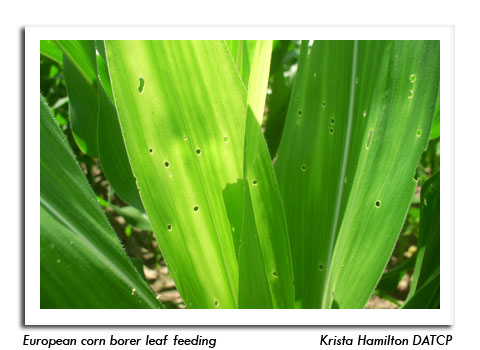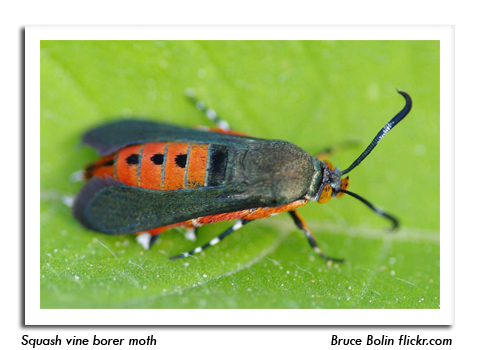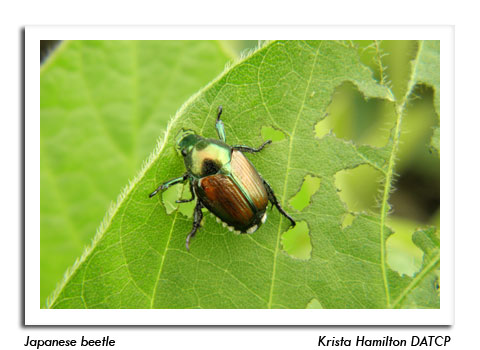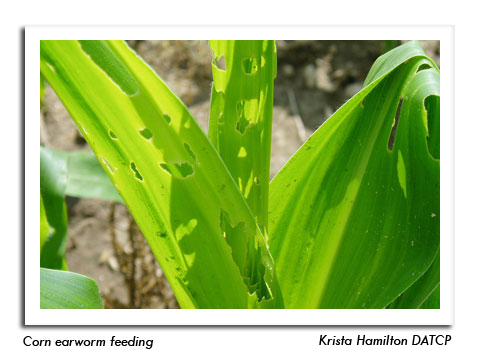
 |
|
|
Looking Ahead
Volume 58 Number 9 Date 06/27/2013 EUROPEAN CORN BORER - Larvae resulting from the spring flight are in the early instars and fresh whorl feeding injury is evident in non-Bt corn and Bt refuge areas. The optimal treatment window for first generation corn borers has opened in the southernmost areas of the state with the accumulation of 800 degree days (modified base 50°F). WESTERN BEAN CUTWORM - The annual trapping survey is now in progress and the results obtained over the next eight weeks are expected to reveal the peak emergence period, potential problem areas and any significant changes in the state moth count. No moths were registered in the 95 pheromone traps set as of June 26. SQUASH VINE BORER - Moth emergence and egg laying are anticipated during the first week of July in the southern areas, about the time chicory blooms. Pumpkins, gourds, squash and other vine crops should be examined daily for eggs and evidence of boring from 900-1,000 degree days (base 50°F). Insecticidal controls must be applied to the stems of plants when the adults are first noticed and while runners are less than two feet long. Repeated applications may be required throughout the three-week oviposition period. JAPANESE BEETLE - The first beetles of the 2013 season could emerge in the next two weeks. Damage to fruits, perennials, nursery stock and field crops should be anticipated throughout July and possibly into August. GRANULATE CUTWORM - This noctuid moth, which bears a close resemblance to the western bean cutworm adult, may appear in black light trap collections in advance of the western bean cutworm. The granulate cutworm is noticeably smaller, about ¾ of the size of the western bean cutworm moth. The annual flight of western bean cutworm adults is unlikely to begin until the first or second week of July. CORN EARWORM - Larvae from an early June migration of moths have been detected in corn in south-central Wisconsin. Cornfields should be checked regularly for this pest and treatment considered if 50% or more of the whorls are infested. -- Krista Hamilton, DATCP Entomologist 




|
|
|